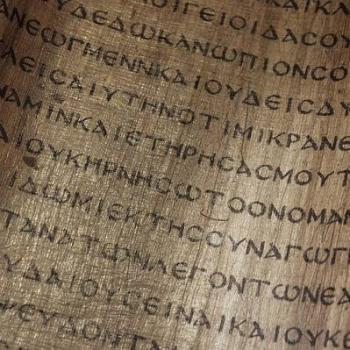GEORGE IN MICHIGAN ASKS:
Why is Acts 1:15-20 so different from Matthew 27:1-10? What bearing does this, and similar phenomena, properly have on how we describe biblical authority, reliability, importance, etc.?
THE GUY ANSWERS:
The death of Judas is a favorite for Muslim polemicists, Christian leftists, and others who scoff at the New Testament’s historical reliability. Matthew 27 recounts that Judas “hanged himself” and was buried in the Field of Blood, which temple priests bought with the payment of 30 silvere pieces that the remorseful Judas had returned to them. But Acts 1 has Peter’s gory report that his former colleague Judas bought the Field of Blood himself and there, “falling headlong he burst open in the middle and all his bowels gushed out.”
New Testament defenders harmonize these as complementary versions of the same event with different emphasis and detail. They propose that Judas died by hanging, the body decomposed, and then burst open when it fell from a rope or tree limb that had broken. (The above translations are from the Revised Standard Version, which provides an alternate reading in Acts saying the body was “swelling up” and burst open rather than “falling headlong.” Another alternate reading, in Matthew, says the body was “impaled” rather than “hanged”.)
The Catholic Answers Web site thinks Peter’s report right after Judas died shows the apostles had only “sketchy” information whereas Matthew wrote later on relying on a fuller account. But nowadays it’s mostly Protestants who seek to defend the Bible with such explanations. The official “Catholic Study Bible” simply admits that Acts “records a popular tradition” that “differs from the one in Matthew.”
Conservative Protestants try to harmonize away another problem by supposing that Judas bought the Field of Blood but only indirectly, giving the money to the priests to make the actual purchase. To the Guy, that seems more of a stretch than combinations of hanging or impaling with a fall and disembowelment.
Left-wingers claim that both passages (and much else in Scripture) are imaginative fiction, not actual history. Oddly, such thinkers agree with Fundamentalist champions of Bible “inerrancy” by saying if the Bible is truly God’s Word it should have literal history that’s totally free of error, and so these liberals impugn the Bible as history if even minor details fall short. Moderate Christians fall in between, untroubled by the small stuff if the over-all scenario rings true.
As a mere newsman accustomed to dealing with conflicting accounts, the Guy is impressed with the argument that the two Judas passages actually enhance the New Testament’s credibility. Say what? Consider that if the scoffers are right and Matthew and Acts as they’ve come down to us were fictional propaganda that was largely made up, then early Christian editors would have reworked the troublesome Judas passages to eliminate the problem. Instead, that obviously didn’t happen, which shows us that Matthew and Acts are two separate, authentic traditions that the early Christians honestly and accurately preserved as originally written.
Incidentally, scriptural inerrancy in Islam requires debunking of such New Testament narratives about the death of Jesus, because the Quran says he was neither killed nor crucified “but it was made to appear so unto them” (4:157, Majid Fakhry translation, New York University Press).












